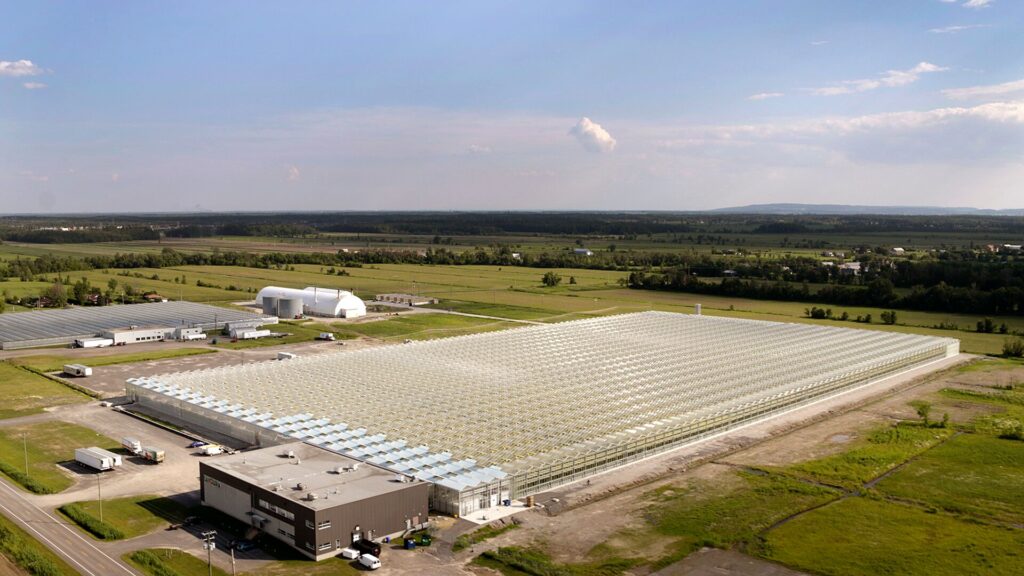A successful sale involves a rigorous process. Abris CBI and Mégatex are two businesses that we have successfully supported—one step at a time.
Guided by our team of experienced professional advisors, Roger Guay, owner of Abris CBI and Mégatex, handed over the reins to a preferred buyer, confidently and serenely.
For over a decade, Roger has built up both his businesses, Abris CBI and Mégatex, based in Lévis and Québec City respectively. Abris CBI specializes in manufacturing temporary winter shelters as well as summer shelters and awnings. Mégatex designs, manufactures and distributes industrial tarps and nets for the construction, transportation and environment industries, among others.
When he turned sixty, the entrepreneur felt the need to slow down and considered selling one of his businesses. He initially called on our services to assist him with the sale of Abris CBI.
“The business was well positioned in its industry and, at the time, had around 15 employees. It was important for me to hand it over to a buyer who would continue to help it grow,” said Roger Guay.
Such a process can monopolize the attention of a business owner, who must also keep the business running smoothly. Thanks to our proven process, we know exactly what path to take to close an SME sale as quickly as possible. This means that the business owner can focus on running the business while we take care of the sale process.
Estimating business value
Working together with the owner of Abris CBI, we started by drawing a list of key criteria for setting a fair business sale price.
Typically, these criteria include, but are not limited to, physical assets, financial performance, market reputation, current employees, and the type and number of customers.
This is a delicate step. Entrepreneurs may have an emotional view of their business’s value that does not necessarily correspond to its actual financial value.
Financial and strategic analysis
After valuing the business, our experts carried out an in-depth financial analysis to identify the business’ strengths and weaknesses, gain a clear understanding of its growth prospects and define the best sale strategy. The objective was to maximize value for the seller while ensuring a fair transaction for the buyer.
Drafting a confidential information memorandum
We then drafted a comprehensive document containing all of the business’s relevant information, including details of operations, financials and target market. This document served as a presentation to potential buyers, enabling them to make an informed assessment of the proposal.
Searching for buyers
We maintain links with buyer networks. So, with the help of the business owner, we drew up a list of strategic potential buyers whom we then contacted. The aim was to find the best candidate, one who would appreciate the business’ mission and value.
Over 30 buyers expressed interest in Abris CBI. We selected the most promising ones and arranged to give them a confidential tour of the business. In the end, three buyers made an offer, which we submitted to Roger Guay.
Negotiating the terms of sale
Fully knowing the owner’s expectations and objectives, our experts subsequently negotiated the terms of the sale with the interested buyers. We act as the seller’s intermediary, looking after their interests and negotiating effectively and without compromise.
Overseeing the transaction
Once we had found the right buyer, we of course supported our client throughout the transaction. This very important step involves carefully scrutinizing the legal and financial aspects to ensure that everything is done by the book.
Coordinating the buyers’ financiers
To streamline the transaction, our experts coordinated communications among all stakeholders, including both parties’ bankers, lawyers and accountants. We also made sure that all shared documents accurately reflected the final agreement.
Supporting legal advisors
Thanks to our legal expertise, we were equipped to navigate the legal complexities of the sale process and thereby protect the seller by ensuring a smooth business transfer. The process took about four months.
“It all went smoothly,” said Roger Guay. “I was given two qualified buyers to choose from. The process was efficient and the result lived up to my expectations.”
The story didn’t end there. “I asked Dominic to estimate the value of my other business, Mégatex,” continued Mr Guay. “It turned out to be worth more than I had thought. The sale of Abris CBI had gone so well that I decided to sell Mégatex too. That was June 2021. The deal closed in late January of the following year.”
The process of selling an SME can be complex. Being properly supported is the key to a successful transaction.
25 Sep 2023 | Written by :
Dominic Chouinard is an expert in business sales and acquisitions at Raymond Chabot Grant Thornton....
See the profileYou could also like to read
Next article
Technological innovation is a core component of modern businesses’ development strategy. Here’s how Savoura has made it a priority.
Savoura has made innovation the driving force behind its greenhouse production business. It has just invested $55 million in its largest project ever, in Sainte-Sophie, where it all began in 1995.
This nine-hectare greenhouse complex, the largest ever undertaken by the group, houses tomato production in state-of-the-art facilities designed to the highest environmental standards. This is just the beginning of its ongoing optimization drive.
We spoke to President and CEO Peggie Clermont about Savoura’s innovation approach.
Staying competitive and profitable
To stay profitable and adapt to market conditions, the business had to look at ways of optimizing its processes, and got all players involved in preparing and implementing a step-by-step action plan.
Peggie Clermont stresses the importance of maintaining a balance between the business’s competitiveness and high quality standards. In her words, “It’s crucial to stay competitive in our industry, but not at the expense of our product quality.”
Her words reflect her commitment to harnessing innovation to improve production processes, reduce costs and increase efficiency without compromising the quality of Savoura’s products.
Identifying priority needs
Innovation isn’t just about technology. It’s a state of mind, a way of approaching things. Peggie Clermont sees innovation as a continuous process, a way of “doing things differently” in all areas of a business, from research and development to sales and production. It’s not static—it’s in perpetual motion.
The organization, like the rest of the industry, is facing numerous challenges and must determine which priorities and solutions are most viable in the short, medium and long run.
Labour shortage
As in all markets, the labour shortage is one of the greatest challenges facing the agri-food industry. Although turning to foreign workers is one solution, it can’t be the only one.
Robotic process automation is one way forward. Savoura used to have a great deal of manual data and systems that didn’t interoperate. Centralizing information and automating administrative processes will enable the business to improve productivity.
What’s more, some tasks can be automated to free up employees for value-added tasks, where their expertise can be put to good use.
International competition
Food self-sufficiency comes at a cost. Savoura faces competition from places like Mexico, Ontario and California.
“Competition, particularly from Mexico, doesn’t play by the same rules or face the same issues we do,” says Peggie Clermont. Differences in environmental standards as well as employee compensation and well-being bring additional challenges.
This observation is a reminder of the need to optimize production to do more and do better with fewer employees and less energy, and thereby improve efficiency.
Energy constraints
Installation, maintenance and energy costs are key factors to consider. For example, because of our colder climate, it’s much more expensive to build a greenhouse here in Québec than in Mexico.
Incentive rates, subsidies and other government assistance programs can help make our businesses more competitive and ensure this industry’s vitality.

Climate change
Faced with climate change, Savoura must constantly adapt to fluctuating weather conditions: violent snowstorms that can damage greenhouses, dim winters, spring frost, summer heatwaves and so on.
Artificial intelligence may prove useful, for example, in more accurately predicting when tomatoes should be harvested.
Resistance to change
As in all industries, businesses in the agri-food industry have to deal with the fear of change.
“As a business leader, you don’t always have all the information on innovation and digital transformation, or on the technology that’s needed, which is normal. By the same token, you may feel destabilized and wonder if, given these changes, you’ll keep the same ability to lead and steer your business.”
You may also be confronted with more resistant employees who fear change. For all these reasons, you need to take the time to fully understand the coming changes, and know how to surround yourself with the right people. You also need to train your employees properly, and remember to involve them in every stage of the process.
Implementing solutions to foster successful innovation
“Innovation means starting with an idea, analyzing it, looking at its feasibility, implementing a project, measuring the results and then making sure to continuously improve what you’ve just implemented,” says Peggie Clermont.
Certain aspects will help you be open to new ideas and implement them successfully.
Management’s commitment
Peggie Clermont emphasizes how important it is for management to be committed to the innovation process. She believes it is crucial to define an action plan and devote financial resources to innovation, despite the costs—because the status quo also has a cost.
Employee involvement
Savoura can also encourage innovation by tapping into its employees’ creativity. The business has created an innovation committee that includes employees of all ages and from all departments. It has also appointed a Special Projects Manager, whose sole responsibility is to drive change for each implemented project (through coordination, documenting and training).
Collaboration and partnership
Peggie Clermont suggests that the business should look outwards to foster innovation. That means collaborating with other businesses or universities.
Community support
Different levels of government can also play a major role in encouraging innovation. “At the societal level, we need assistance programs aimed at supporting innovative businesses through financial assistance, favourable tax measures or, alternatively, by supporting training in fields related to innovation and technology,” she concludes.
Next article
Every generation is a new generation. How can you attract generations X, Y and Z and put their talents to work for your business?
Typically, each generation of workers has its own characteristics and aspirations. You should take this into account when interviewing candidates because the work experience they will want will vary based on whether they are in their twenties, thirties or fifties.
Each generation has its own priorities
Of course, each case is unique. But it’s fair to say that younger workers often look for the following:
- Opportunities to progress rapidly within the organization;
- Good, progressive conditions for work-life balance;
- Businesses that are at the forefront in terms of technological tools, ways of doing things and communication methods;
- Businesses that encourage knowledge sharing and have a strong organizational culture, in a climate of trust and respect;
- The possibility of relying on a mentor (a more experienced employee) in the organization and on a friendly, collegial environment;
- More human employers and a closer relationship with the immediate supervisor.
Meanwhile, older workers are more interested in:
- Organizations where they can share their experience;
- Challenges in which their level of expertise is valued and contributes to success;
- Greater leeway in their responsibilities;
- Flexible working hours, such as the option of a four-day week.
Generational mixes: an asset
As far as possible, be open to assessing applications from different generations to broaden and enrich the potential talent pool. This will make it easier for you to find the skills profile you need.
What’s more, aiming for a generational mix within your organization is a winning factor in recruiting and engaging staff.
Each age group has its strengths, can learn from another age group and can contribute in varied and complementary ways to the success of your business. With a structure and culture that encourage collaboration among your multi-generational employees, you’ll create an engaging work environment that fosters knowledge sharing and the development of new ideas.
Cultivating a sense of belonging
Engagement is just as important as recruitment because it’s the key to retaining your employees. So, create an organizational culture that emphasizes collaboration, development and recognition. Help younger workers to progress and older ones to share their know-how.
It’s your responsibility as an employer to motivate your troops and be proactive, especially in a teleworking context. You should do so through collaboration and communication tools, as well as training and activities that help develop that sense of belonging so essential to the success of any organization.
Adapting to candidates’ aspirations
In recent years, the labour shortage has shaken up recruitment strategies. Facing an abundance of vacancies, most workers can shop around and choose the job that best suits them. It’s up to employers to be as appealing as possible, and to adapt to the needs and aspirations of candidates interested in a position.
That’s why it’s important to focus your attention on the candidates you’re interviewing and take an interest in what motivates them.
See where they are in their career path and make sure you fully understand their needs. For example, ask them what they want to achieve in the next three to five years. This will help you:
- Assess whether your offer matches candidates’ needs;
- Find out whether candidates are ready to commit to your organization for a given number of years;
- Propose an integration, development and training plan that aligns with candidates’ aspirations.
To build a relationship of trust with candidates, provide them with ample relevant information about the support you’ll be providing. And of course, once you’ve hired your rare gem, make sure you keep your promises!
Looking for advice on how to optimize your recruitment and staff engagement efforts? Contact our specialists. They’re happy to help.
06 Sep 2023 | Written by :
Next article
The International Accounting Standards Board (IASB) has amended IAS 21 The Effects of Changes in Foreign Exchange Rates to clarify the approach that should be taken by preparers of financial statements when they are reporting foreign currency transactions, translating foreign operations, or presenting financial statements in a different currency, and there is a long-term lack of exchangeability between the relevant currencies.







